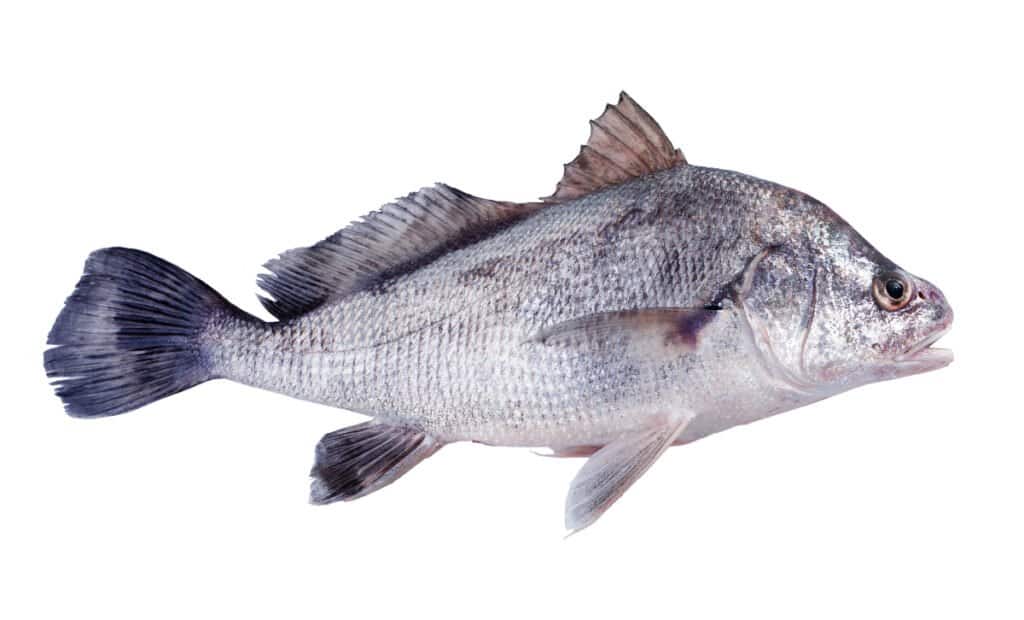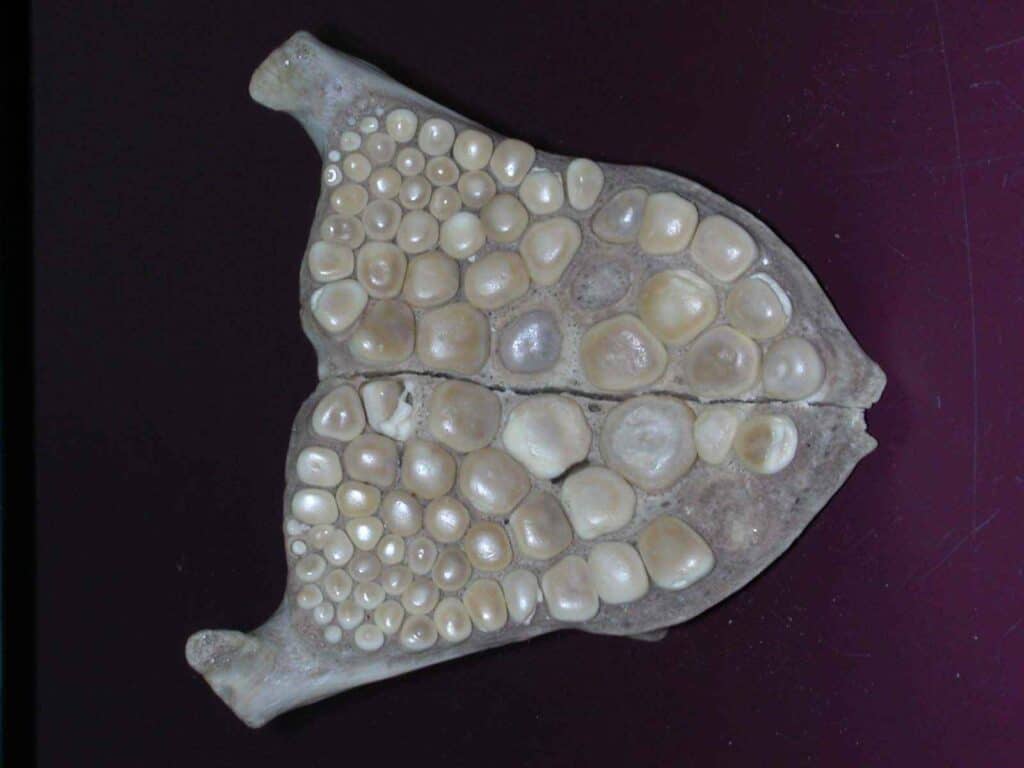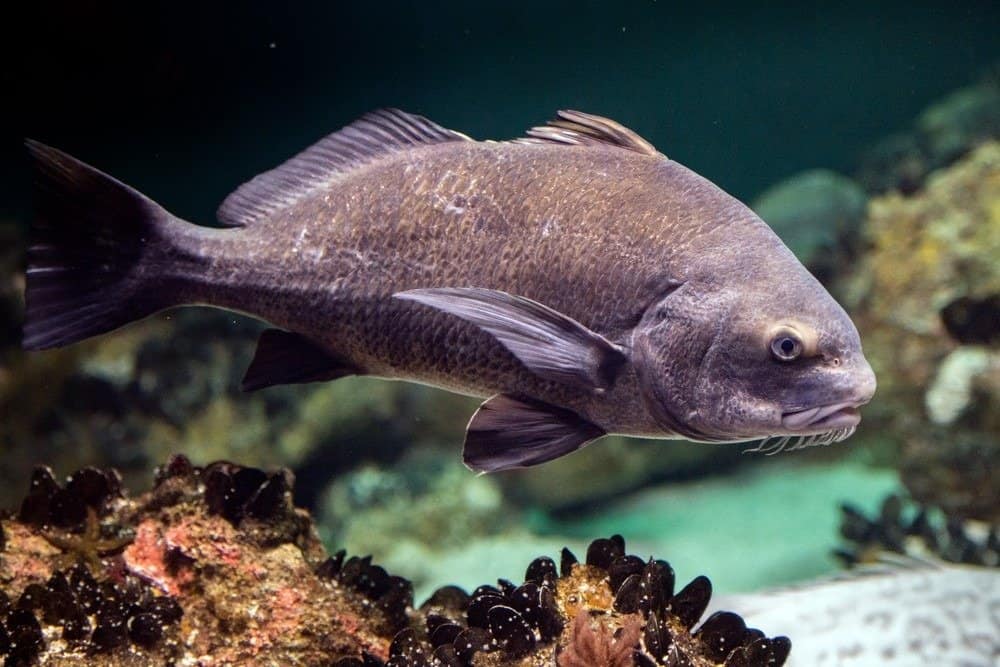Appearance-wise, the drum fish may look like a typical type of fish. They have around 275 species inhabiting both freshwater and sea and are dispersed in various locations around the globe. However, despite their facade, the drum fish is actually no ordinary fish because drum fish teeth are unique and are stranger than any other in the ocean. Unlike most carnivorous fish that possess serrated teeth lining around their jaws, drum fish have countless shell-crushing molars which are not visible to the naked eye.
Drum fish are given their unique name not because they have drums in their bodies but because they let out croaker sounds produced by their swimming bladders. They are native to freshwater and oceans, while some species prefer to settle in freshwater exclusively. Three of the most popular drum fish species include the red drum, also called red fish, the freshwater drum, and the black drum. In some parts of Canada and the United Kingdom, black drums are commonly known as sheepsheads.
Do Drum Fish Have Teeth?

Drum fish have pharyngeal teeth deep inside their throats
©IrinaK/Shutterstock.com
At first glance, drum fish teeth may seem non-existent. It is because most drum fish do not have teeth in the outer parts of their mouths. Some species may have small, pointed teeth surrounding their jaws, but drum fish teeth are generally located deep inside their mouths, around their throat, and resemble molars.
Drum fish have “pharyngeal (throat) teeth” situated deep inside their throat, at the final gill arch at the back portion of their head. Drum fish teeth are not visible to the naked eye and can only be seen by lifting the gill cover called operculum and looking underneath the gills. The placement of these teeth and their number are unique to various drum fish families and species.
Because not all of the drum fish species live in the same habitat, their diet varies depending on where they live. However, the greatest similarity in their diet is that drum fish love to munch on shellfish and crustaceans, thus their vital need for shell-crushing teeth.
What Kind of Teeth Does A Drum Fish Have?

Drum fish grind and crush food with their pharyngeal teeth
©USFWS / pixnio – License
Generally, drum fish have a unique set of molar-like teeth tightly packed together at the back of their mouth, near their throat. These teeth are called pharyngeal teeth and are utilized mainly in crushing and grinding tough food such as mollusks and crustaceans.
The drum fish typically live in the benthic zone, where they often find their prey on ocean invertebrates and small fishes. Despite their lack of teeth in the front portion of their mouth, they can still eat hard-shelled food through the help of their pharyngeal teeth, with dental formations varying depending on the species and their diet.
Red Drum Fish
The red drum’s pharyngeal teeth are big and sharp, and they are utilized mainly in shredding and ripping their food, including small crabs, fish, shrimp, marine worms, and other invertebrates. They are often thought to have no teeth because they do not have a single tooth inside their mouth, making them safe to handle as red fish normally do not bite. Red drum fish settle in oceans and are typically bottom feeders.
Freshwater Drum Fish
Freshwater drums, the only freshwater-dwelling species of drum fish in North America, also share the same dental structure as the red drum fish, except they have tiny, sharp, and conical cardiform teeth lining the jaws. These teeth help freshwater drums to snout on crayfish and aquatic insects. At the back of their mouth, going down their throat, are similar molariform cusps that help them crush crustaceans and snails that they usually prey on in their habitat.
Black Drum Fish
Black drum fish have molar-like teeth with flat crowns located at the lower portion of their gills. However, black drum fish have small and pointed teeth surrounding their jaws, unlike the red drum.
Apart from these small, slightly visible teeth, there are huge, flat, pavement-like teeth in their throat, same as red drums, which black drums use to crush shellfish and mollusks for sustenance. In order to crush its hard-shelled, bivalve prey such as oysters and clams, the black drum has molar-like pharyngeal teeth. These teeth are designed to provide the heavy forces needed to break open bivalve shells.
A black drum’s diet mainly consists of crabs, small fish, small shrimp, algae, mollusks, and marine worms. Younger black drums less than 8 inches long usually eat soft-bodied creatures such as small fish and marine worms.
Black drums have a silvery color with blackish fins, thus their name. Drum fish fossil teeth have been discovered on several Florida beaches and shores that generate Miocene-deposited debris.
How Strong is a Drum Fish Bite?

A drum fish has a bite force of about 11,000 Newtons
©Andrea Izzotti/Shutterstock.com
Given an exclusive diet of hard-shelled invertebrates such as mollusks, crustaceans, and other shellfish, drum fish are expected to have a ferocious bite to be able to crush and grind these tough shells. The black drum species is shown to have one of the strongest fish jaws in the world, exhibiting a bite force of up to 11,000 Newtons. Relative to weight, a black drum’s bite can be compared to that of a crocodile.
The black drum’s upper pharyngeal jaw doesn’t get pulled back by the dorsal retractor muscle as it does in other marine vertebrates, so it doesn’t move. This means that to break open hard-shelled marine bivalves, black drum fish needs to bite onto them with an extremely tight force, which is in contrast to the tearing forces used to break open red drum’s weaker shelled prey.
Scientists are surprised with the black drum’s super jaw because, unlike most jaws made of cortical bone, black drums possess jaws that have 3D-arranged beams. Their teeth, made of high-density dentin tubules, an amplified pulp chamber, and a customized connection between the bone and the dentin, all show that black drum teeth have clearly adapted to their hard-shelled diet.
The photo featured at the top of this post is © USFWS / pixnio – License / Original
Thank you for reading! Have some feedback for us? Contact the AZ Animals editorial team.






